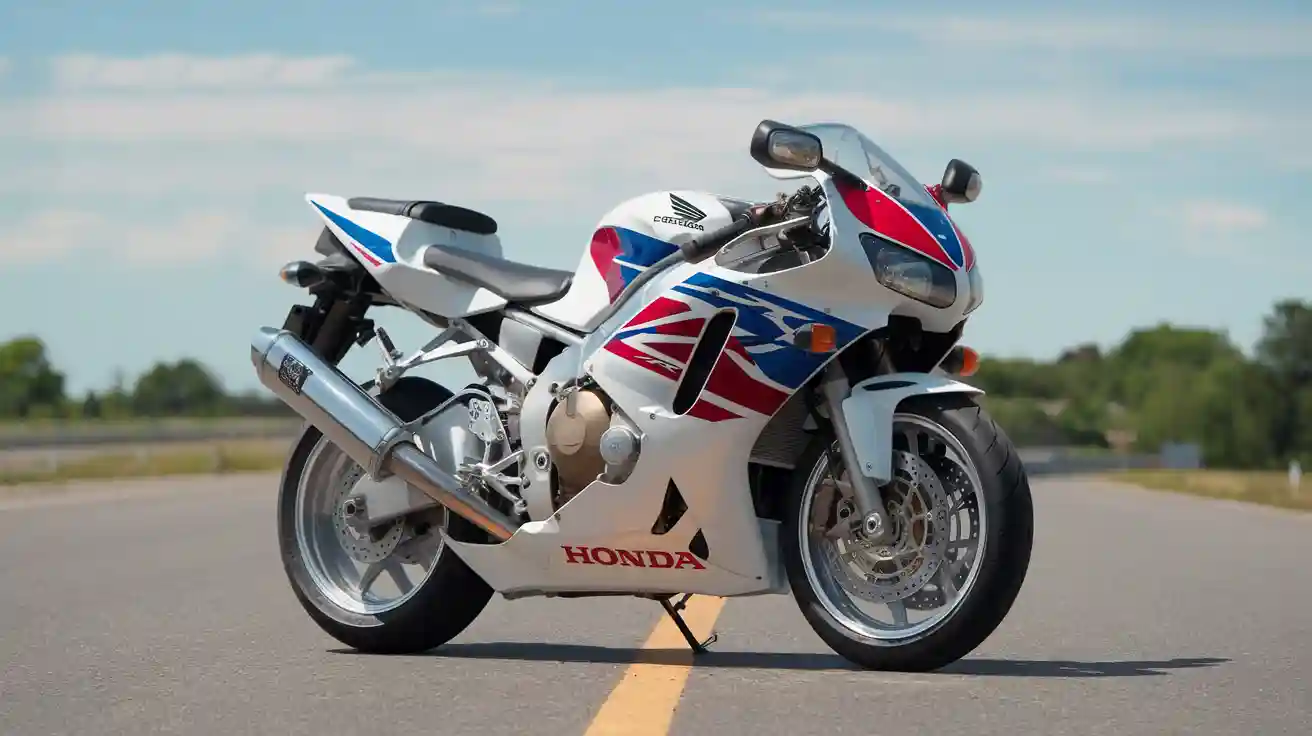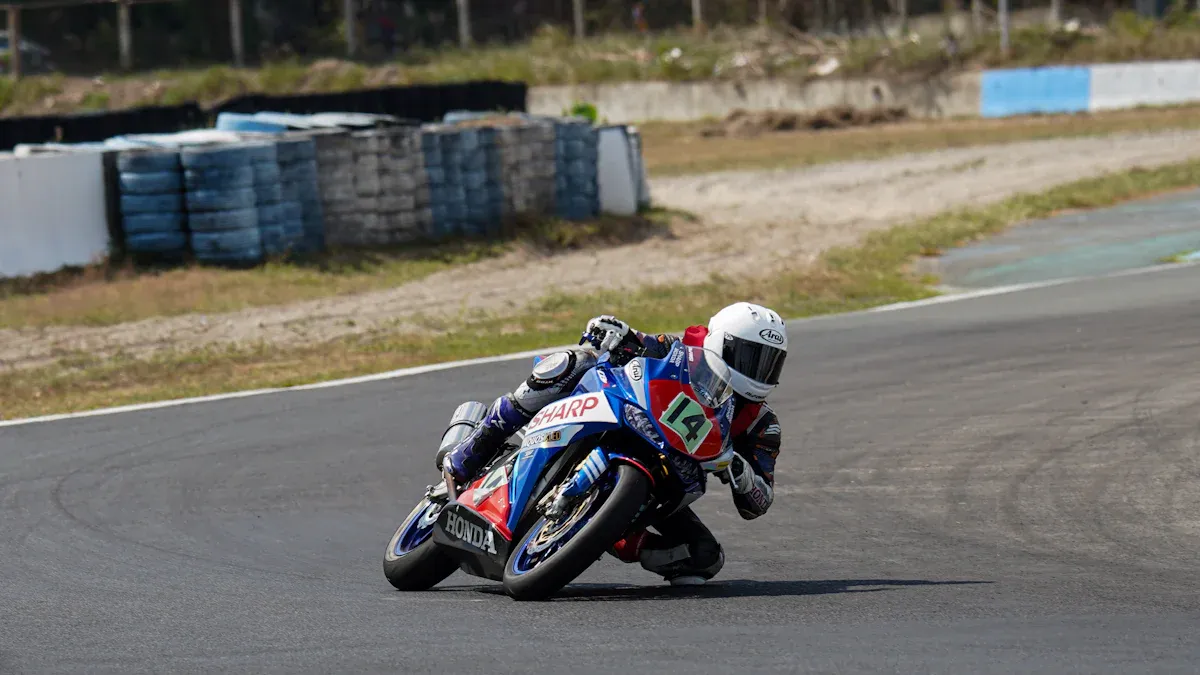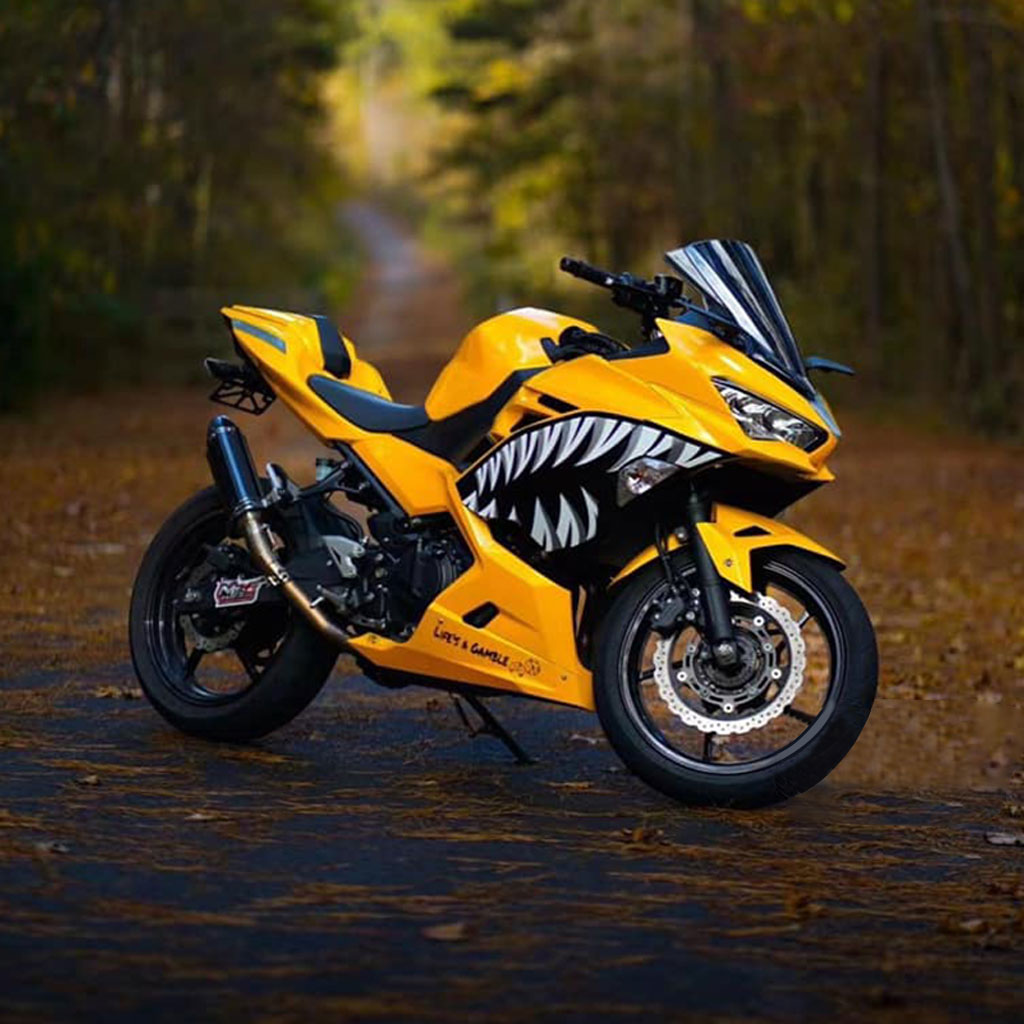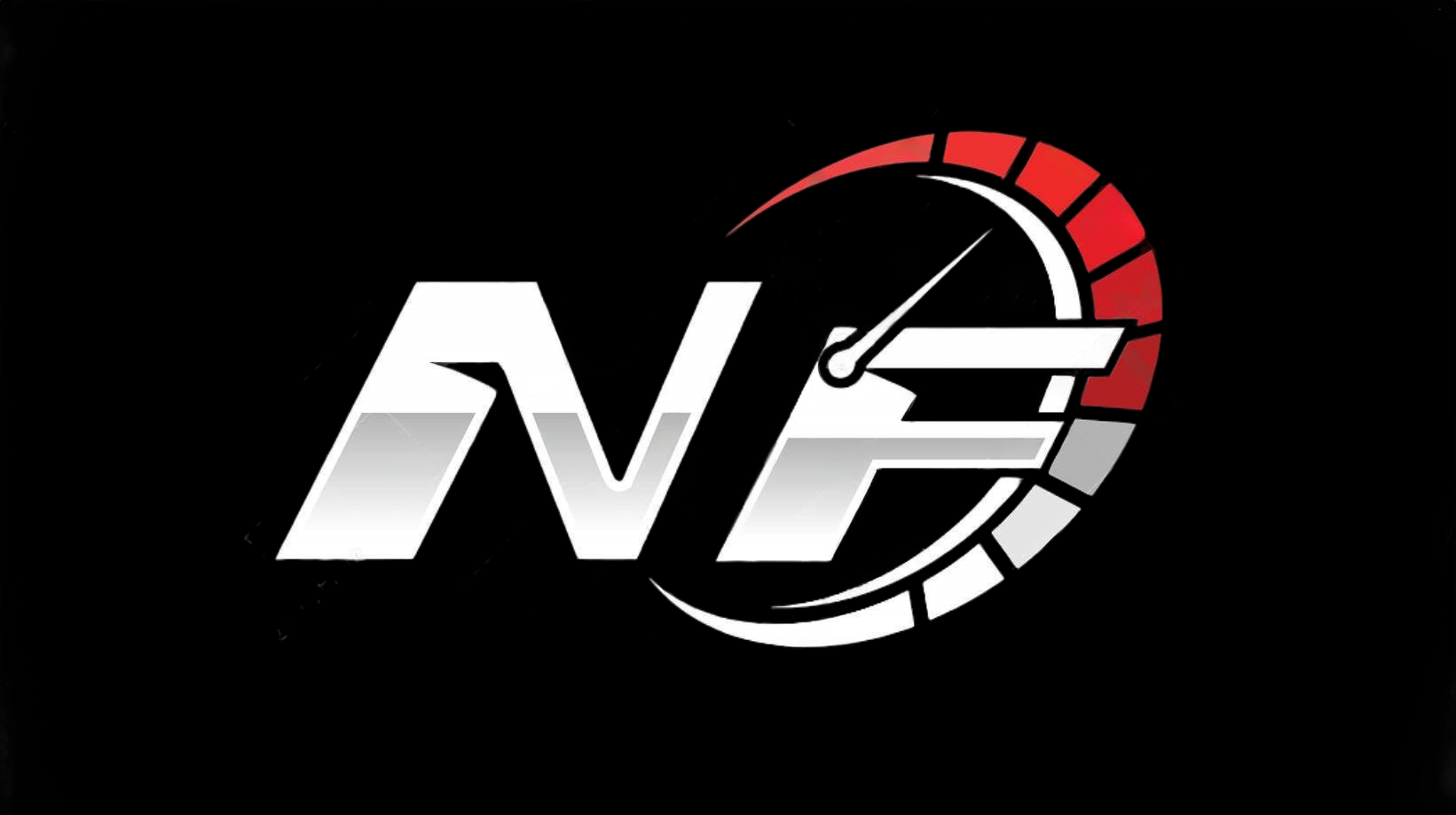Honda 2006 CBR1000RR Comprehensive Test Ride Review

The Honda 2006 CBR1000RR stands as a popular choice among motorcycle enthusiasts. In 2006, this motorcycle led superbike sales in the UK, reflecting its strong appeal in a competitive market. Riders praise the Honda CBR for its impressive sportbike performance. However, some note that comfort drops during rides over 100 miles. The 2006 Honda CBR1000RR suits those who seek power and agility in a motorcycle, especially for shorter trips or spirited rides.
"A rider who experienced a 2004 Honda CBR1000RR described it as an impressive sportbike, indicating its standout quality, but also noted a significant drawback: it would not be comfortable to ride for distances over 100 miles."
2006 Honda CBR1000RR Overview and Key Updates
2006 Model Highlights
The honda 2006 cbr1000rr stands out as a major step forward in the fireblade series. Honda redesigned about 60% of the cbr1000rr components for this year, making the new cbr lighter, faster, and more responsive. Riders notice the magnesium engine covers and a lighter fairing profile, which help reduce weight. The new cbr also features a lighter exhaust system and a more compact radiator. Honda increased the compression ratio to 12.2:1, and the redline now reaches 12,200 RPM. The new cbr uses dual nested valve springs and a revised crankshaft alloy for better durability. The rear sprocket has one more tooth, improving acceleration. Steering geometry changes, such as a decreased rake and shortened trail, make the fireblade more agile. The front brake rotors now measure 320mm, offering better stopping power. Honda claims a 17-pound reduction in wet weight and a 3% increase in peak power, all while keeping strong low-to-mid range performance.
- Magnesium engine covers and lighter fairing
- New camshaft metallurgy and reduced shaft wall thickness
- Lighter exhaust and radiator
- Smaller, lighter ECU
- Compression ratio raised to 12.2:1
- Dual valve springs and revised crankshaft
- Redline increased to 12,200 RPM
- Rear sprocket with one extra tooth
- Steering geometry changes for quicker handling
- Larger front brake rotors
- 17 lb weight reduction, 3% more peak power
Notable Changes from Previous Years
The 2006 honda cbr1000rr fireblade brings many updates compared to the 2005 model. Engine improvements include new cylinder-head porting and a revised combustion chamber. The new cbr features lighter components, such as a magnesium left engine cover and a lighter exhaust. Honda also introduced new transmission gears and clutch needle bearings for better engagement. The ram-air intake screen now reduces air resistance. Chassis updates, including new geometry, improve handling. The fireblade now has larger front brakes with four-piston radial-mounted calipers. Suspension settings have changed, with a new rear linkage inspired by MotoGP. The new cbr also gets all-new bodywork for a more aggressive look and improved seat foam for comfort. New color options appear for 2007, giving riders more choices.
| Specification | 2006 Honda CBR1000RR Details |
|---|---|
| Dry Weight | 176.0 kg (388.0 pounds) |
| Power Output | 169.50 HP (123.7 kW) at 11,250 RPM |
| Ignition System | Computer-controlled digital transistorized with 3D mapping |
| Fuel Injection | Dual Stage Fuel Injection (DSFI) |
| ABS and Advanced Electronics | Not present in 2006; ABS introduced only in 2009 |
The fireblade continues to set the standard for the cbr1000rr class. The 2006 model, while lacking ABS and advanced electronics found in later 2007 models, offers a pure, rider-focused experience. The new cbr remains a top choice for those seeking a true sportbike feel in a motorcycle. The fireblade legacy continues to grow, with each new cbr and every 2007 update pushing the limits of performance.
Honda 2006 CBR1000RR Engine and Performance
Power Delivery and Acceleration
The honda cbr1000rr fireblade delivers outstanding power that sets it apart in the liter-class sportbike segment. Honda engineers designed the 998cc inline four-cylinder engine to produce a thrilling riding experience. The 2006 model features a compression ratio of 12.2:1, revised cam timing, and improved intake and exhaust porting. These upgrades result in a 3% increase in peak power over previous versions. The engine now produces between 172 and 174 bhp at 11,000 to 11,250 rpm. Torque reaches 104 Nm at 10,000 rpm, which is higher than earlier models. The redline climbs to 12,200 rpm, allowing riders to push the cbr1000rr to its limits.
| Specification | Value | RPM |
|---|---|---|
| Horsepower (bhp) | 172 - 174 | 11,000 - 11,250 |
| Torque (Nm) | 103.6 - 104.05 | 8,500 - 10,000 |
| Torque Peak RPM | 10,000 | 10,000 |
The honda cbr1000rr fireblade stands out for its rapid acceleration. Riders experience a strong surge of power as the tachometer climbs. The new double-spring intake valve design and increased valve lift contribute to sharper throttle response. The rear sprocket, now with one extra tooth, improves low-end acceleration. The cbr 1000rr can reach its top speed quickly, making it a favorite for those who crave speed and excitement.
Real-World Riding Impressions
On the road, the honda cbr1000rr fireblade feels responsive and eager. Riders notice the smooth delivery of power across the rev range. The engine pulls hard from midrange to redline, providing confidence during overtakes and spirited riding. The cbr1000rr maintains strong performance even at higher speeds. Many riders appreciate the balance between raw power and control. The chassis and engine work together to create a stable and predictable ride.
Fuel efficiency remains respectable for a superbike. The 2006 honda cbr1000rr fireblade achieves about 37 miles per gallon under mixed riding conditions. This figure allows riders to enjoy performance without frequent stops at the gas station. The cbr1000rr also handles city traffic and highway cruising with ease. Riders find the throttle easy to modulate, which helps in daily use.
Note: The honda cbr1000rr fireblade rewards experienced riders with its blend of power and usability. Beginners may find the performance overwhelming, but seasoned enthusiasts will appreciate the precise engineering.
Throttle Response and Usability
The throttle response on the honda cbr1000rr fireblade feels immediate and predictable. Honda’s engineers focused on making the cbr1000rr easy to control, even at low speeds. The revised fuel injection system and lighter engine internals help deliver smooth power. Riders can fine-tune their inputs, which makes the bike suitable for both street and track use.
The cbr1000rr offers usability that matches its performance. The engine responds well to small throttle openings, making it manageable in traffic. At the same time, the bike unleashes its max power when the rider demands it. The honda cbr1000rr fireblade stands as a benchmark for liter-class sportbikes, combining outstanding power with everyday practicality.
Riders who seek a machine that excels in both acceleration and control will find the honda cbr1000rr fireblade a compelling choice. The cbr 1000rr continues to impress with its blend of technology, performance, and reliability.
2006 Fireblade CBR1000RR Handling and Braking

Suspension and Ride Quality
The 2006 fireblade cbr1000rr features a fully adjustable suspension system. Honda engineers designed the front fork with 43mm inverted telescopic forks. The rear uses a Unit Pro-Link swingarm with a gas-charged shock. This setup allows riders to fine-tune the honda cbr1000rr fireblade for different road conditions. Many owners praise the suspension for its ability to absorb bumps and maintain stability. The cbr1000rr glides over rough pavement without losing composure.
The fireblade offers a firm ride, which suits aggressive riding styles. Riders who prefer comfort may find the seat a bit stiff, but the suspension delivers excellent feedback. The honda cbr1000rr fireblade responds well to adjustments, making it easy to set up for track days or daily commuting. The quality of the components stands out in this class. Riders often mention the durability and reliability of the suspension system.
Tip: Riders can adjust preload, compression, and rebound damping on both the front and rear suspension. This flexibility helps the cbr1000rr adapt to different rider weights and preferences.
Steering and Stability
The 2006 fireblade cbr1000rr excels in steering precision. Honda reduced the rake and trail for this model year, which makes the honda cbr1000rr fireblade more agile. The bike changes direction quickly and holds its line through corners. Many riders notice the light steering feel at low speeds. At higher speeds, the fireblade remains stable and predictable.
The cbr1000rr uses a lightweight aluminum frame. This frame contributes to the bike’s balanced handling. The honda cbr1000rr fireblade inspires confidence in both new and experienced riders. The steering damper helps control unwanted movement at high speeds. Riders appreciate the quality of the chassis and the way it works with the suspension.
A table below summarizes the key steering and stability features:
| Feature | Description |
|---|---|
| Frame | Lightweight aluminum twin-spar |
| Steering Geometry | Reduced rake and trail for quicker response |
| Steering Damper | Electronically controlled |
| Weight Distribution | Optimized for balance and agility |
The fireblade’s stability at its top speed impresses many owners. The cbr1000rr tracks straight and resists wobble, even during hard acceleration. Riders often mention the quality of the steering components and the confidence they provide.
Braking Performance
Braking performance defines the honda cbr1000rr fireblade. The 2006 fireblade cbr1000rr uses 320mm front brake rotors with radial-mounted four-piston calipers. The rear brake features a single 220mm disc. This setup delivers strong stopping power and excellent feel at the lever.
Riders report that the cbr1000rr brakes inspire trust in all conditions. The fireblade stops quickly, even from high speeds. The quality of the brake components ensures consistent performance over time. Many owners highlight the progressive nature of the brakes. The honda cbr1000rr fireblade allows for smooth, controlled stops without abruptness.
- Key braking features:
- Large 320mm front rotors
- Radial-mounted calipers for better force distribution
- Steel-braided brake lines for improved feel
Note: The fireblade’s braking system does not include ABS in the 2006 model. Riders must rely on skill and the quality of the hardware.
The cbr1000rr stands out for its blend of handling, braking, and overall quality. The 2006 fireblade cbr1000rr remains a benchmark in the liter-class sportbike segment. Riders who value precise control and high-quality components will appreciate the honda cbr1000rr fireblade.
2006 Honda CBR 1000RR Comfort and Ergonomics
Seat and Riding Position
The fireblade offers a focused riding position that suits aggressive riding. Honda designed the seat to be narrow and firm, which helps riders grip the motorcycle during cornering. The 2006 honda cbr 1000rr places the rider in a slightly forward-leaning stance. This position gives excellent control over the cbr1000rr, especially on twisty roads. Taller riders may feel cramped after long rides, while shorter riders find the seat height manageable. The seat padding feels firm, which supports the fireblade’s sporty nature. Riders who prefer comfort on long journeys may want to consider aftermarket seat options.
Wind Protection
Honda shaped the fireblade’s fairing and windscreen to reduce wind buffeting at high speeds. The cbr1000rr’s windscreen directs airflow over the rider’s helmet, which helps reduce fatigue. Riders notice that the fairing provides decent coverage for the chest and shoulders. On the highway, the fireblade keeps wind pressure manageable, but some wind reaches the arms and lower body. The motorcycle’s compact design means wind protection is not as extensive as on touring bikes. For most sportbike riders, the cbr1000rr’s wind management strikes a good balance between aerodynamics and rider comfort.
Tip: Riders can add a taller aftermarket windscreen for extra wind protection during long rides.
Street vs. Track Usability
The fireblade adapts well to both street and track environments. On city streets, the cbr1000rr feels nimble and easy to maneuver. The upright controls and responsive chassis make daily commuting enjoyable. On the track, the fireblade’s aggressive ergonomics and precise feedback shine. Riders can shift their weight easily for fast cornering. The cbr1000rr’s suspension and seat design favor spirited riding over comfort. For those who want a motorcycle that excels in both settings, the fireblade remains a top choice.
| Environment | Fireblade Strengths | Fireblade Limitations |
|---|---|---|
| Street | Nimble, easy to control, stylish | Firm seat, sporty posture |
| Track | Precise, stable, excellent feedback | Less comfort on long sessions |
The fireblade’s comfort and ergonomics reflect its racing heritage. Riders who value performance and control will appreciate the cbr1000rr’s design.
Honda CBR1000RR Fireblade Reliability and Build Quality
Owner Experiences
Owners consistently praise the honda cbr1000rr fireblade for its reliability & build quality. Many riders report that the fireblade delivers dependable performance even after years of use. The cbr1000rr stands out for its robust engine and solid construction. Riders who follow the recommended maintenance schedule often see their fireblade exceed 80,000 miles without major engine or transmission repairs. Some owners have even reached over 100,000 miles with normal street riding. The fireblade’s quality inspires confidence, especially for those who use the cbr1000rr for daily commuting or weekend rides.
However, owner experiences highlight the importance of regular use. When the cbr1000rr sits unused for long periods, small rust and carbon deposits can form on the valve faces. This issue leads to low compression and makes starting the fireblade difficult. Riders sometimes notice the bike starts briefly and then dies, or fails to start after months of inactivity. Proper storage and periodic engine runs help maintain the fireblade’s reliability & build quality.
Tip: Owners recommend starting the cbr1000rr regularly and following Honda’s maintenance guidelines to preserve reliability & build quality.
Known Issues and Maintenance
The honda cbr1000rr fireblade has a reputation for high reliability & build quality, but some issues can arise, especially with infrequent use:
- Rust and carbon deposits on valve faces after long storage
- Low compression causing hard starting or engine stalling
- Overfilled oil affecting starting performance
- Fuel pump and injector concerns if left unused
Riders address these problems by cleaning and lapping the valves, adding oil to cylinders, or using starting fluid. Careful throttle control during startup also helps the fireblade run smoothly.
Routine maintenance plays a key role in the cbr1000rr’s reliability & build quality. Honda recommends the following schedule:
| Maintenance Task | Interval (miles) | Interval (km) | Notes |
|---|---|---|---|
| Engine oil and filter change | 8,000 | 12,000 | Replace annually or at interval |
| Valve clearance inspection | 16,000 | 24,000 | Inspect and adjust as needed |
| Coolant replacement | Every 2 years | N/A | Replace coolant fluid |
| Brake and clutch fluid replace | Every 2 years | N/A | Replace brake and clutch fluid |
| Chain lubrication and adjustment | 600 | 1,000 | Check and lubricate regularly |
Regular inspections of tires, brakes, and suspension further support the fireblade’s reliability & build quality. Honda recommends professional servicing for complex tasks. While typical maintenance costs vary, most owners agree that the cbr1000rr offers excellent value for its level of quality and durability.
2006 Honda CBR1000RR Value and Competition
Price and Features
The 2006 fireblade entered the market as a premium sportbike, offering a strong mix of performance and quality. Buyers found the fireblade’s price competitive among liter-class motorcycles. Honda included high-quality components, such as fully adjustable suspension and radial-mounted brakes, which added to the fireblade’s value. Riders appreciated the fireblade’s balance of comfort and agility, making it a top choice for those seeking value vs rivals. The 2007 models introduced more electronics, but the 2006 fireblade focused on pure riding experience. Many owners felt the fireblade delivered strong value for the money, especially when compared to rivals with similar features.
Resale Value
Over the past decade, the fireblade’s resale value has shown a downward trend. Many owners report that Honda sportbikes, including the fireblade, do not hold their value as well as some rivals. Dealers often offer low trade-in values, even for well-maintained fireblade models. Private sales sometimes bring better value, but depreciation remains a concern. Riders looking for long-term value vs rivals should consider this factor. The fireblade’s quality and reliability help maintain some value, but the market perception affects resale. Owners who prioritize value may find the 2006 fireblade a smart buy if purchased at a reasonable price.
Note: The fireblade’s value retention often depends on maintenance records and overall quality. Regular care can help preserve value vs rivals.
Comparison with Rivals
The 2006 fireblade faced strong competition from rivals like the Kawasaki ZX-10R, Yamaha YZF-R1, and Suzuki GSX-R1000. The table below highlights key differences between the fireblade and one of its main rivals:
| Aspect | 2006 Honda CBR1000RR Fireblade | 2006 Kawasaki Ninja ZX-10R |
|---|---|---|
| Engine Displacement | 998cc | 998cc |
| Cylinders | 4 | 4 |
| Horsepower | 172 hp | 175 hp |
| Wheelbase | 1400 mm | 1390 mm |
| Seat Height | 831 mm | 825 mm |
| Dry Weight | 176 kg | 173 kg |
| Handling | Agile, comfortable, secure handling | Excellent handling with Öhlins steering damper |
| Strengths | Balanced performance, good traction feel | Strong engine, great gearbox, anti-hopping clutch |
| Weaknesses | Slightly less peak power | Seat height challenging for smaller riders |
The fireblade stands out for its balanced ride and quality, while some rivals focus on peak power or advanced features. The 2007 fireblade models added more technology, but the 2006 version remains a favorite for those who value pure riding. Riders comparing value vs rivals often choose the fireblade for its mix of quality, comfort, and reliability.
The honda 2006 cbr1000rr delivers impressive quality with a smooth engine, refined handling, and user-friendly controls. Riders notice the quality of its build and the quality of its components. Motorcycle journalists highlight the quality of its ride, but they also point out the extra weight, which affects cornering quality. The quality of the suspension and brakes stands out, yet the bike’s weight limits agility.
Experts recommend the honda 2006 cbr1000rr for experienced riders who value quality and can handle its responsive nature. Long-term owners report lasting quality, making this model a strong choice for those who prioritize quality in every ride.
FAQ
What makes the 2006 Honda CBR1000RR stand out in terms of quality?
Honda built the 2006 CBR1000RR with high-quality materials and precise engineering. Riders notice the attention to detail in the frame, engine, and finish. The motorcycle delivers consistent performance and durability, which reflects Honda’s commitment to quality.
How does the 2006 CBR1000RR compare to newer sportbikes?
The 2006 CBR1000RR offers a pure riding experience without advanced electronics. Many riders value its mechanical quality and direct feedback. While newer models have more features, this bike still impresses with its balance and build quality.
Is the 2006 CBR1000RR suitable for daily commuting?
Many owners use the 2006 CBR1000RR for daily rides. The motorcycle handles city traffic well and provides reliable performance. Riders appreciate the comfort for short trips, but the firm seat may limit comfort on longer commutes.
What maintenance helps preserve the quality of the CBR1000RR?
Regular oil changes, valve inspections, and chain adjustments keep the CBR1000RR running smoothly. Following Honda’s maintenance schedule helps maintain the motorcycle’s quality and extends its lifespan. Riders recommend storing the bike properly during long periods of inactivity.

